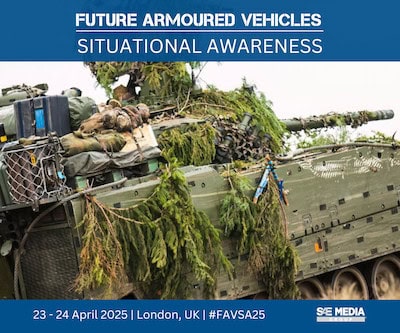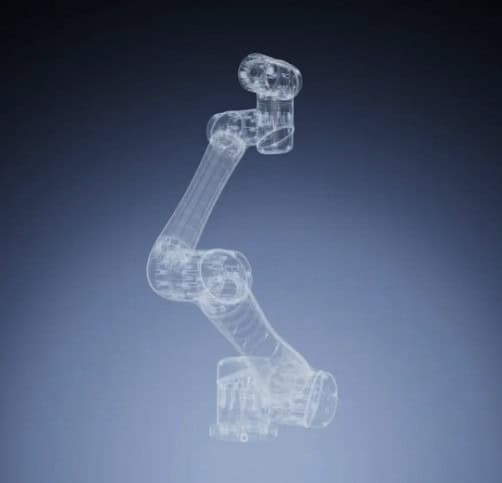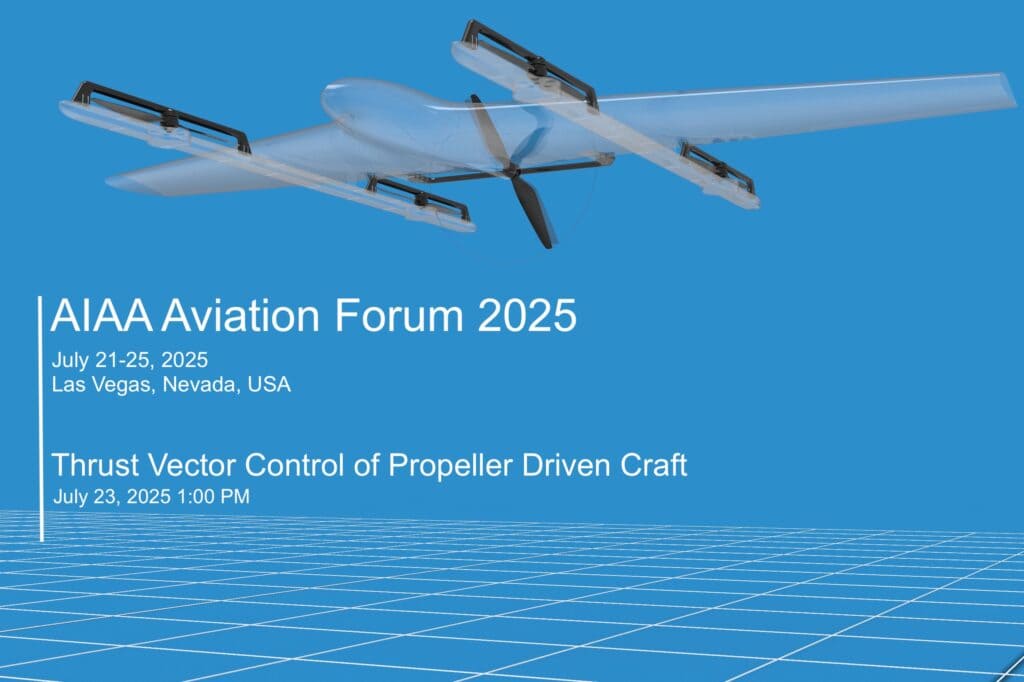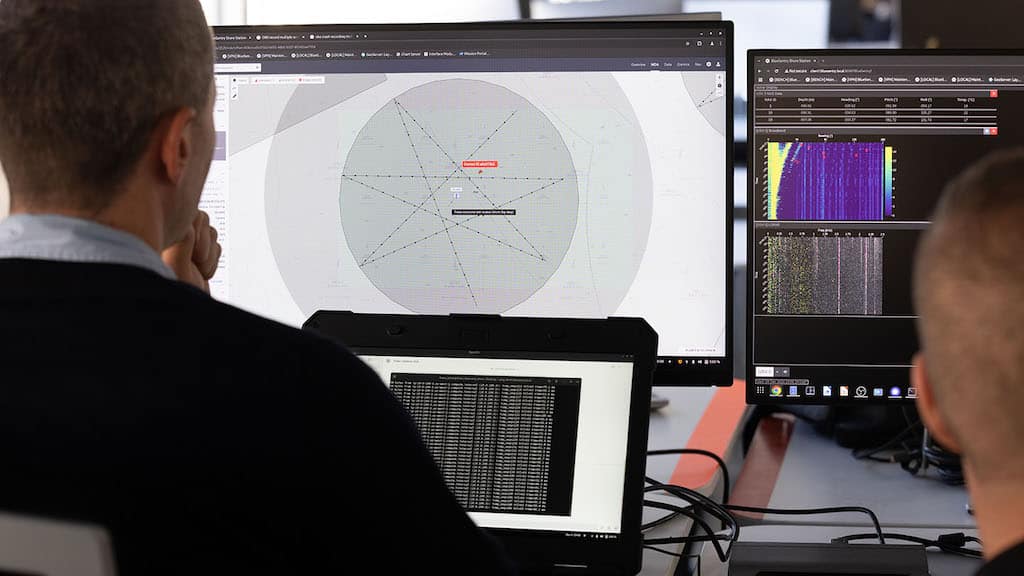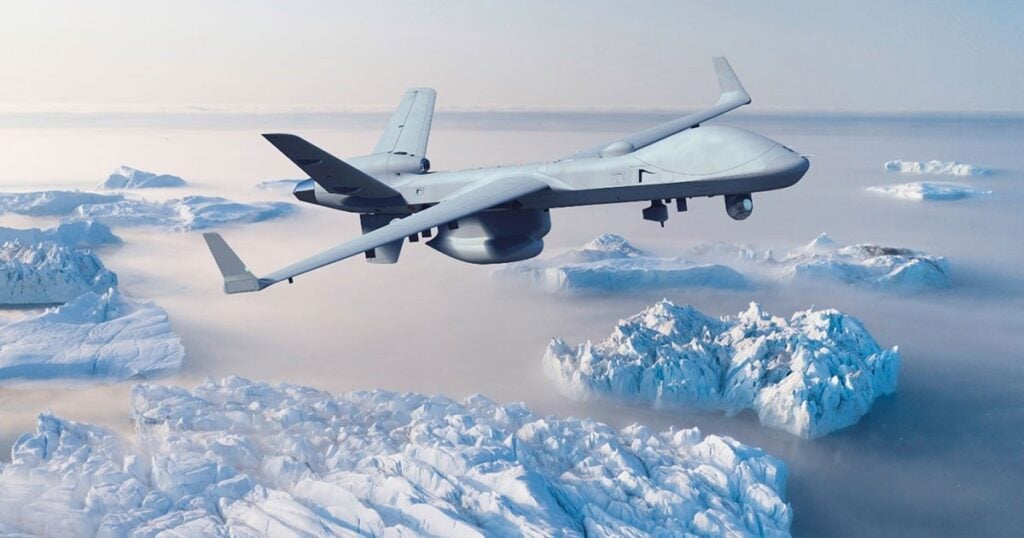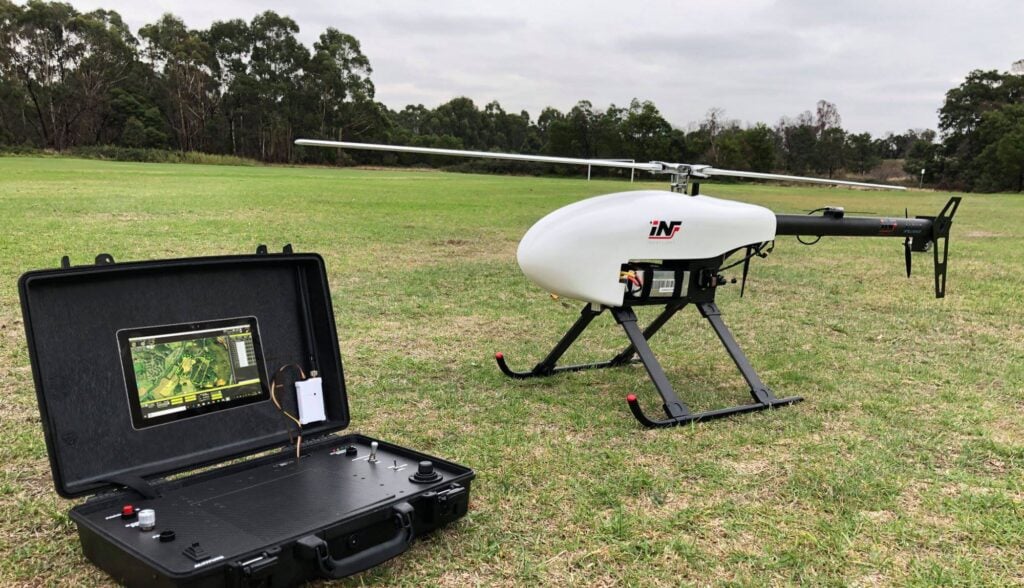
Unmanned & Autonomous Systems
Discover cutting-edge solutions from 9 leading global suppliers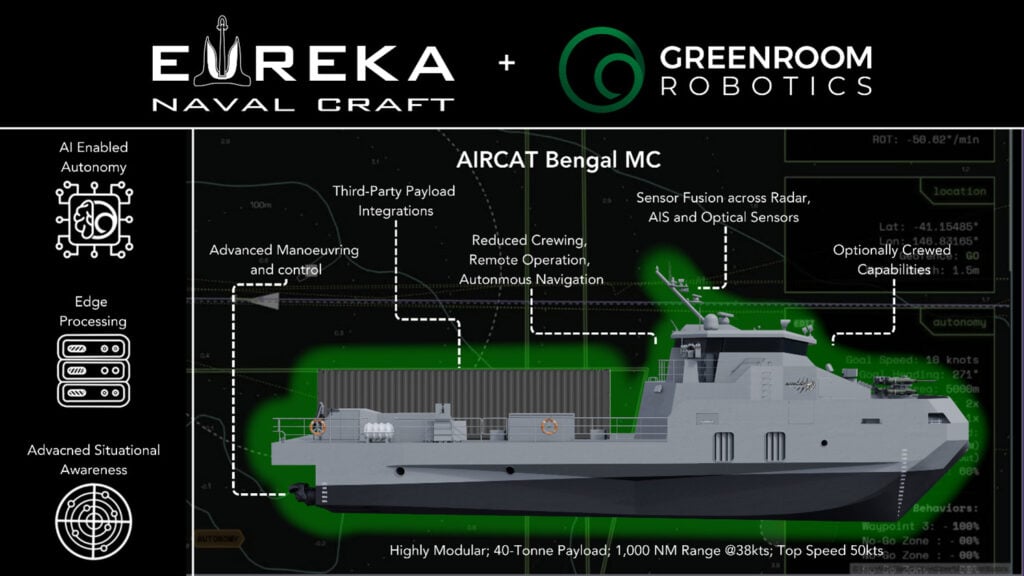
U.S.-based Eureka Naval Craft and Australia’s Greenroom Robotics are set to unveil what they claim is the most advanced autonomous naval attack vessel ever developed.
The design will make its debut at the Sea-Air-Space Exhibition in Maryland, USA, taking place from April 6–9, 2025.
The AIRCAT Bengal MC (Module Carrier) is a 36-meter, multi-mission Surface Effect Ship (SES) engineered for high-speed, high-payload autonomous operations. Developed in collaboration with naval architects ESNA and powered by Greenroom Robotics’ advanced autonomy and AI suite, the Bengal MC represents a significant leap forward in modular naval capability.
Eureka Naval Craft CEO, Bo Jardine, said, “We’re very excited to reveal the AIRCAT Bengal MC. This is a high-speed, high-tech ship able to operate crewed and uncrewed. It is further bristling with lethality and can launch Tomahawk cruise missiles and anti-ship Naval Strike Missiles (NSM). This ‘force projection’ capability is very important as it de-risks the reliance on much bigger, more expensive crewed warships to fire missiles. The reality is the naval market in this weight class needs disrupting. Too many vessels today are outdated, sluggish, and expensive. The AIRCAT Bengal MC offers a very fast alternative ship which is armed to the teeth, can be made autonomous, and has the capability to carry much heavier payloads at speed, increasing lethality.”
Jardine continued, “The vessel stands out by providing a more cost-effective solution compared to current naval corvettes and frigates, thanks to its optimized design and use of modular construction techniques that reduce both manufacturing and repair costs. Furthermore, the Bengal MC’s superior fuel efficiency and lower operational overhead make it an attractive option for navies looking to maximize their budgets while maintaining advanced capabilities.”
Greenroom Robotics CEO James Keane, added, “This is a terrific ship and we’re delighted to be working with Bo Jardine and the Eureka team on the software. The AIRCAT Bengal MC will benefit from the proven Greenroom Advanced Maritime Autonomy (GAMA) Software system Greenroom have spent years developing and had validated on a 57m decommissioned Armidale-class patrol boat, Sentinel, known as the Patrol Boat Autonomy Trial (PBAT).
“PBAT was rapidly executed to become one of the most successful autonomy projects ever undertaken on a naval vessel where Greenroom collaborated with Trusted Autonomous Systems, Austal Australia and the Royal Australian Navy. Drawing on this expertise the AIRCAT Bengal MC will have state-of-the-art AI-driven advanced situational awareness, and swarm-ready fleet enablement systems allowing naval or coastguard crews to operate with unparalleled precision, safety, and effectiveness in high-threat maritime scenarios.”
Designed to carry up to 40 tonnes—equivalent to two 40-foot ISO-standard containers—the vessel combines heavy-lift utility with unprecedented agility. It can achieve speeds exceeding 50 knots, depending on payload, and offers an operational range of 1,000 nautical miles. This capability makes the Bengal MC the first autonomous naval platform globally to combine such a heavy payload capacity with high-speed performance.
The vessel is being positioned for acquisition by the U.S. Navy and Marine Corps, as well as allied forces across AUKUS and NATO, including partner nations such as Japan, Singapore, South Korea, Vietnam, Thailand, and the Philippines. With its modular architecture and mission-adaptable capabilities, the Bengal MC is suited for a wide array of naval applications, including:
- High-speed troop transport
- Amphibious landing support
- Electronic warfare and cyber operations
- Mothership for aerial and surface drones
- Mine-laying and counter-mine operations
At the core of the Bengal MC is Greenroom’s autonomy software suite, which provides best-in-class navigation, real-time threat response, and human-machine teaming support. The system enhances operator awareness and decision-making throughout all mission phases, enabling rapid response and mission adaptability in contested maritime environments.
As the latest addition to Eureka’s expanding AIRCAT family—which includes the Bengal, Lynx, Jaguar, and Panther platforms—the Bengal MC continues the company’s legacy of delivering high-speed, mission-specific vessels for both manned and unmanned operations. The modular design philosophy allows operators to tailor each vessel to their unique mission requirements, offering plug-and-play adaptability across multiple warfare domains.
Eureka’s vessel line is engineered for a superior speed-to-weight ratio, reduced fuel consumption, and lower emissions. Their Surface Effect Ship hull design ensures greater ride stability and reduced fatigue on sensitive systems, enhancing the accuracy of onboard weaponry and reducing wear on both personnel and equipment during extended missions.
The unveiling of the AIRCAT Bengal MC at Sea-Air-Space is set to mark a major milestone in the evolution of autonomous naval warfare, setting a new standard for performance, versatility, and mission readiness in the maritime domain.




